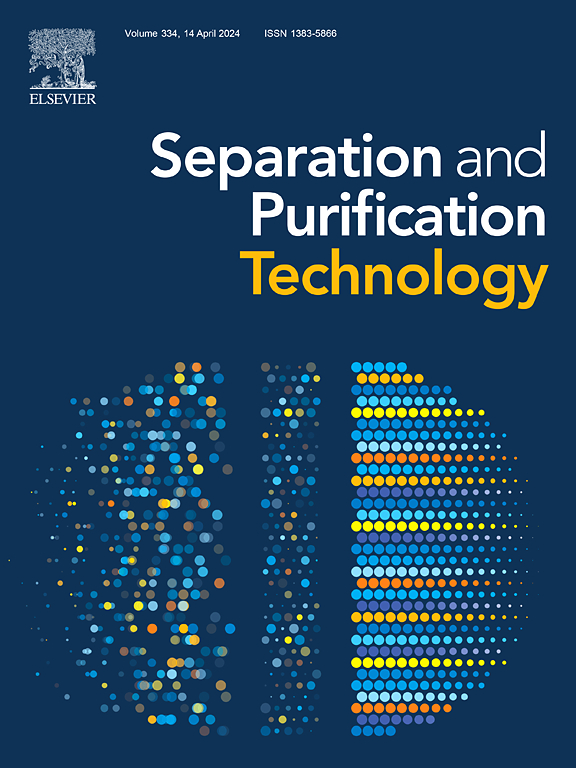Molecular engineering modulated electronic structure of carbon nitride boosting nonradical dominated PMS activation for efficient organic pollutant degradation
IF 9
1区 工程技术
Q1 ENGINEERING, CHEMICAL
引用次数: 0
Abstract
Nonradical-dominated persulfate oxidation reactions on polymeric carbon nitride (PCN) have received increasing attention for the removal of organic pollutants, yet are severely hampered by the irregular movement and rapid recombination of charge carriers. Herein, benzothiazole (BT) and benzimidazole (BM) were grafted onto the edges of PCN to modulate their electronic structure for efficient peroxymonosulfate (PMS) activation. Experimental and theoretical analysis demonstrate that BT and BM units as electron donors not only significantly enhances light absorption, but also facilitates directional charge transport. Besides, the more favorable PMS adsorption by CN-BT and CN-BM compared to PCN further promote electron transfer. Interestingly, the BM unit with stronger electron-donating capacity endow CN-BM with faster carrier separation and more efficient PMS activation. More importantly, the PMS on the CN-BM surface could form metastable CN-BM/PMS* surface complex with enhanced oxidation properties, significantly facilitating the nonradical oxidation of BPA. Accordingly, the CN-BM/PMS/vis system exhibits the highest reaction kinetic constants (0.31 min−1) for BPA degradation, which is 5.2 times higher than that of the PCN/PMS/vis system (0.06 min−1). This work provides new guidance for molecular engineering on carbon nitride and insights into water purification.


分子工程调节氮化碳的电子结构,促进非自由基主导的PMS活化,有效降解有机污染物
聚合物氮化碳(PCN)上非自由基主导的过硫酸盐氧化反应在去除有机污染物方面受到越来越多的关注,但由于载流子的不规则运动和快速重组,严重阻碍了过硫酸盐氧化反应的发展。本文将苯并噻唑(BT)和苯并咪唑(BM)接枝到PCN的边缘,以调节它们的电子结构,从而有效地激活过氧单硫酸盐(PMS)。实验和理论分析表明,BT和BM作为电子给体不仅能显著增强光吸收,还能促进定向电荷输运。此外,与PCN相比,CN-BT和CN-BM对PMS的吸附更有利,进一步促进了电子转移。有趣的是,BM单元具有更强的供电子能力,使CN-BM具有更快的载流子分离和更有效的PMS活化。更重要的是,在CN-BM表面的PMS可以形成亚稳的CN-BM/PMS*表面复合物,具有增强的氧化性能,显著促进了BPA的非自由基氧化。因此,CN-BM/PMS/vis体系降解BPA的反应动力学常数最高(0.31 min−1),是PCN/PMS/vis体系(0.06 min−1)的5.2倍。这项工作为氮化碳分子工程和水净化提供了新的指导。
本文章由计算机程序翻译,如有差异,请以英文原文为准。
求助全文
约1分钟内获得全文
求助全文
来源期刊

Separation and Purification Technology
工程技术-工程:化工
CiteScore
14.00
自引率
12.80%
发文量
2347
审稿时长
43 days
期刊介绍:
Separation and Purification Technology is a premier journal committed to sharing innovative methods for separation and purification in chemical and environmental engineering, encompassing both homogeneous solutions and heterogeneous mixtures. Our scope includes the separation and/or purification of liquids, vapors, and gases, as well as carbon capture and separation techniques. However, it's important to note that methods solely intended for analytical purposes are not within the scope of the journal. Additionally, disciplines such as soil science, polymer science, and metallurgy fall outside the purview of Separation and Purification Technology. Join us in advancing the field of separation and purification methods for sustainable solutions in chemical and environmental engineering.
 求助内容:
求助内容: 应助结果提醒方式:
应助结果提醒方式:


